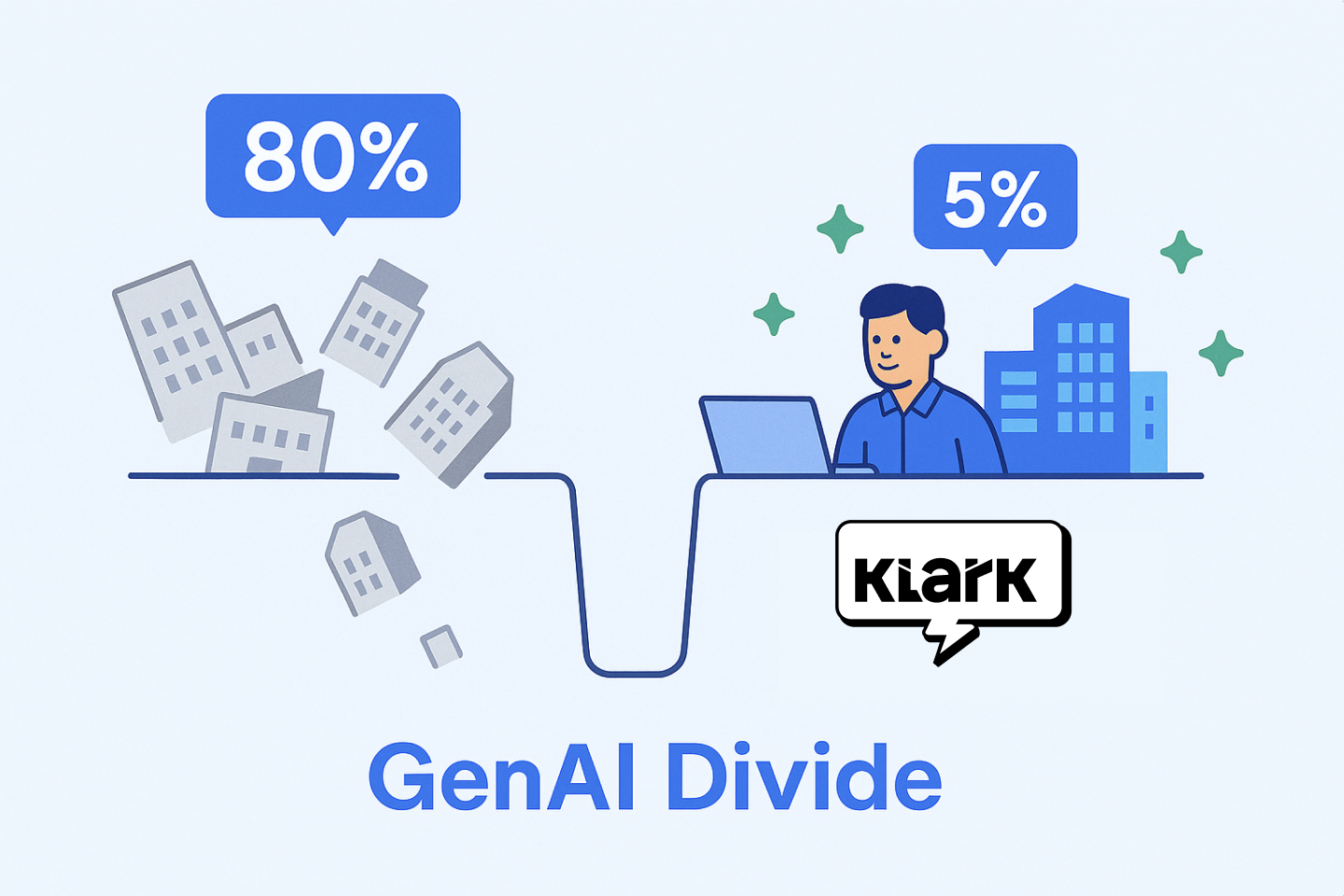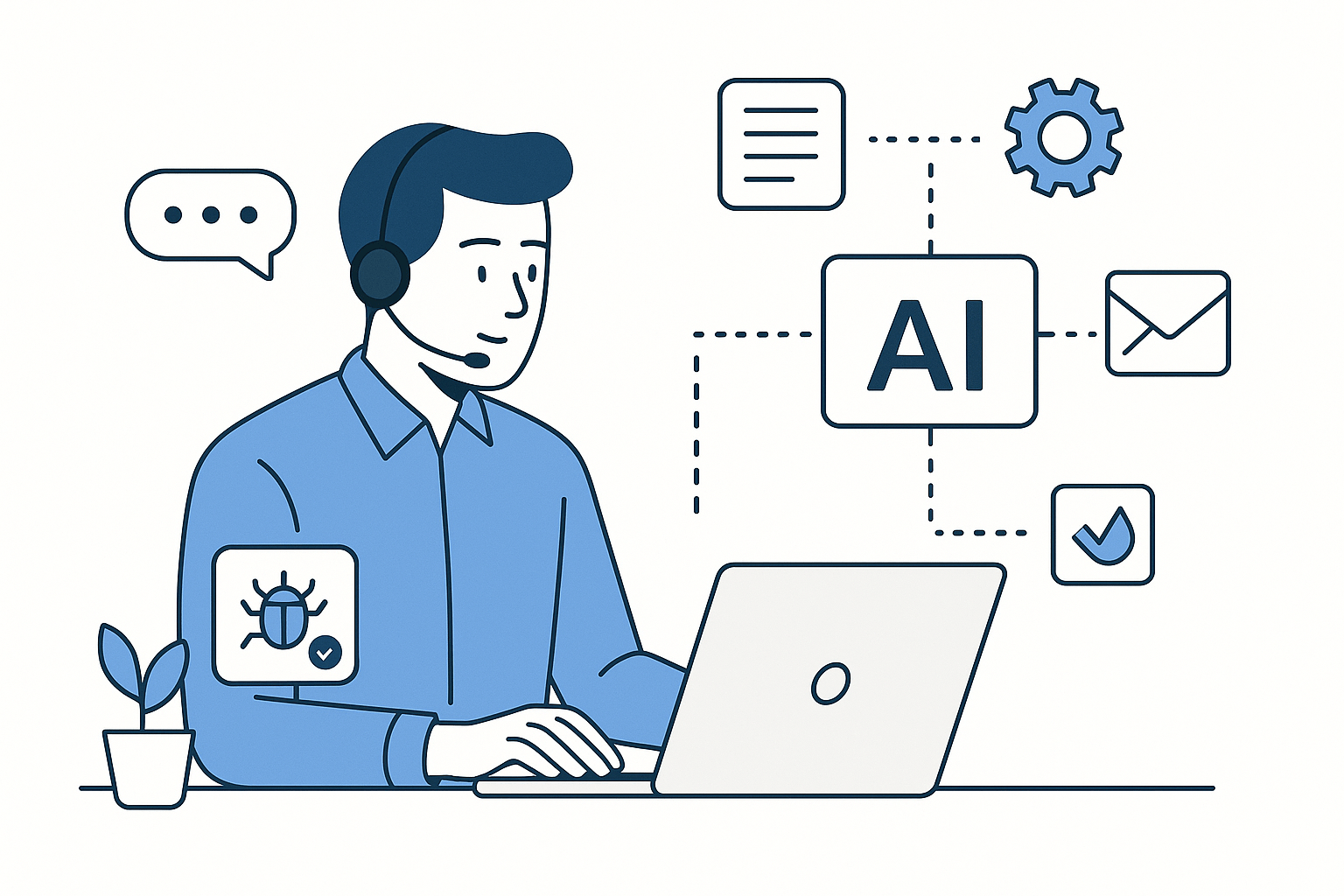
According to an MIT study, 80% of companies have already tested artificial intelligence solutions, but only 5% have reached a production phase with a measurable impact on performance.
A clear observation: adoption is massive, transformation remains marginal.
So why do 95% of companies fail to make a real return from their generative AI projects? And how can we reach those who are turning technology into value?
The "GenAI Divide" describes the gap between the growing adoption of generative AI solutions and the concrete impact observed on business performance.
The MIT study is based on over 300 public initiatives and more than 200 interviews with senior executives conducted between January and June 2025. Despite estimated investments of $30-40 billion, 95% of companies have yet to see a measurable return.
This gap is not due to a lack of ambition, but to recurring errors in implementation: poorly integrated technologies, ill-defined priorities, inadequate governance.

Less than one project in twenty goes beyond the pilot phase. There are three main reasons for this:
The result is often the same: promising initiatives, but disconnected from the day-to-day life of teams, unable to scale up.
The study highlights three key levers for converting GenAI experiments into lasting impact.
Companies that develop their products in-house achieve a success rate of only 33%, compared with 67% for those working with specialist partners.
Business expertise and integration capabilities make all the difference. At Klark, we co-construct with support teams to rapidly deliver value.
Today, the majority of GenAI budgets are focused on marketing and sales, while the strongest returns are found in the back office: operations, finance, compliance, and above all customer service.
It's in these areas that AI can generate tangible ROI, by reducing the volume of manual tasks, speeding up request resolution and improving the consistency of responses.
These gains translate directly into time saved, costs avoided and increased satisfaction- three measurable levers of performance.
The most successful projects are those built from the ground up.
Observing user usage, listening to feedback and continuously adjusting : this is the key to anchoring AI in the reality of teams.
At Klark, we use these real needs as a starting point to develop our co-pilot in line with the day-to-day practices of customer service agents.
Klark has been designed to make generative AI useful, measurable and adoptable.
Our AI co-driver integrates directly with customer support tools (Zendesk, Salesforce, Gorgias) and continuously learns from your teams' best responses.

Companies equipped with Klark quickly notice :
Klark is not a top-down IT solution. We work hand in hand with the business, and in particular the support teams.
Our dual expertise - AI + customer support - enables us to provide our customers with pragmatic, long-term support.
Klark is not an experiment: it's an AI co-driver designed for support teams, with an approach focused on real-world performance.
Our mission: to transform automation into a sustainable driver of productivity and satisfaction.
Make an appointment to find out how Klark can accelerate your support → Book a demo
Because the future of customer service does not lie between humans and machines, but in their intelligent collaboration.





